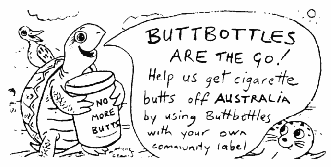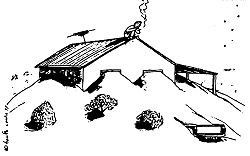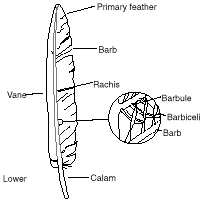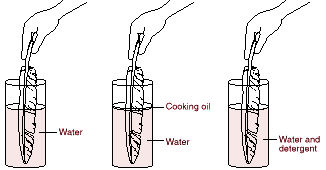Theme: Celebrate the Sea: Clean Oceans
Seaweek '98 coordinator: Barbara Jensen
Activity 1: Connecting with your Catchment
Aim
- to demonstrate that we all live in a catchment and this is connected to the sea.
Activity
- Identify where the school is, using a map of your catchment.
- Work out which creek your school water run-off would flow to. Where does the creek start, where does it enter the ocean?
- Discuss the condition of the creek ie It's smell, colour, bank condition etc. Do you swim in it? Drink it? What lives in it?
- Collect eight samples from the creek and send the samples to eight other schools that are also in your catchment. Ask them to send back a sample of the water from their creek.
- Exchange photos, information and other relevant material about the catchment and enter this on your map.
- Use all the information and water samples as a starting point for exploring and building up a picture about your catchment. Consider how the water is used by the plants, animals and people, all the way from the highest point to the sea.
Adapted from the Primary Activity Booklet in the Seaweek'98 Education Kit by Jim Grant and Ann Fleming The Health Check segment is reprinted with permission from CSIRO Double Helix Club Magazine and the Wetlands Unit of Environment Australia. The Health Checks were part of the Seaweek'98 Education Kit. To obtain a copy ring the Wetlands Unit on 02 6274 2385. |
|
|
Butt Bottles
Aim
- to increase awareness of cigarette butts as a marine pollution issue.
- to take action to reduce butt littering.
|
 |
| |
|
|
Activity
- Do a litter survey and discover cigarettes are a major part of the rubbish collected. Find out how long they take to break down.
- Collect empty film canisters.
- Design, print and paste a label on to the canisters and turn them into portable ashtrays
- Plan an awareness/action day and give the butt bottles away, as you encourage their use and promote understanding of the butt rubbish issue eg at a school market or sports day.
|

Even though Wayne had used the
beach as an ashtray for years,
he still seemed surprised when the
beach filled up his house with sand. |
From Seaweek '98 Education Kit developed by Howie Cooke.
Effect of Oil on Feathers
Aim
- to investigate the effect of oil and detergent on feathers and to bird life.
|
Activity
- Fill a glass with clean water. Dip a feather in and look into the glass. When you pull the feather out, it will be mostly dry. The trapped air layer makes the feather waterproof.
- Make an oil spill by pouring some cooking oil onto the water surface. This floating oil may form a thin layer as it spreads out. Ask students how oil spills happen and which coastal and marine animals are affected?
- Push the feather into the oily water. How does the feather look now?
|
 |
- Pull the feather out of the glass. You will find it is covered in oil. The oil has stuck to the natural oils in the feathers and clogged it. You will notice the feather structure has been damaged. Ask students how this would affect penguins, coastal seabirds etc.
- Fill another glass with clean water. Add some detergent and push a new feather into this.
- Pull the feather out. Notice it is soaked in water. What removed the natural oils from the feather? It is no longer waterproof and does not maintain its fine structure. Discuss why birds are washed but then kept in captivity for a while before release.

From the Primary Activity Booklet in the Seaweek'98 Education Kit by Bob Moffat |
|